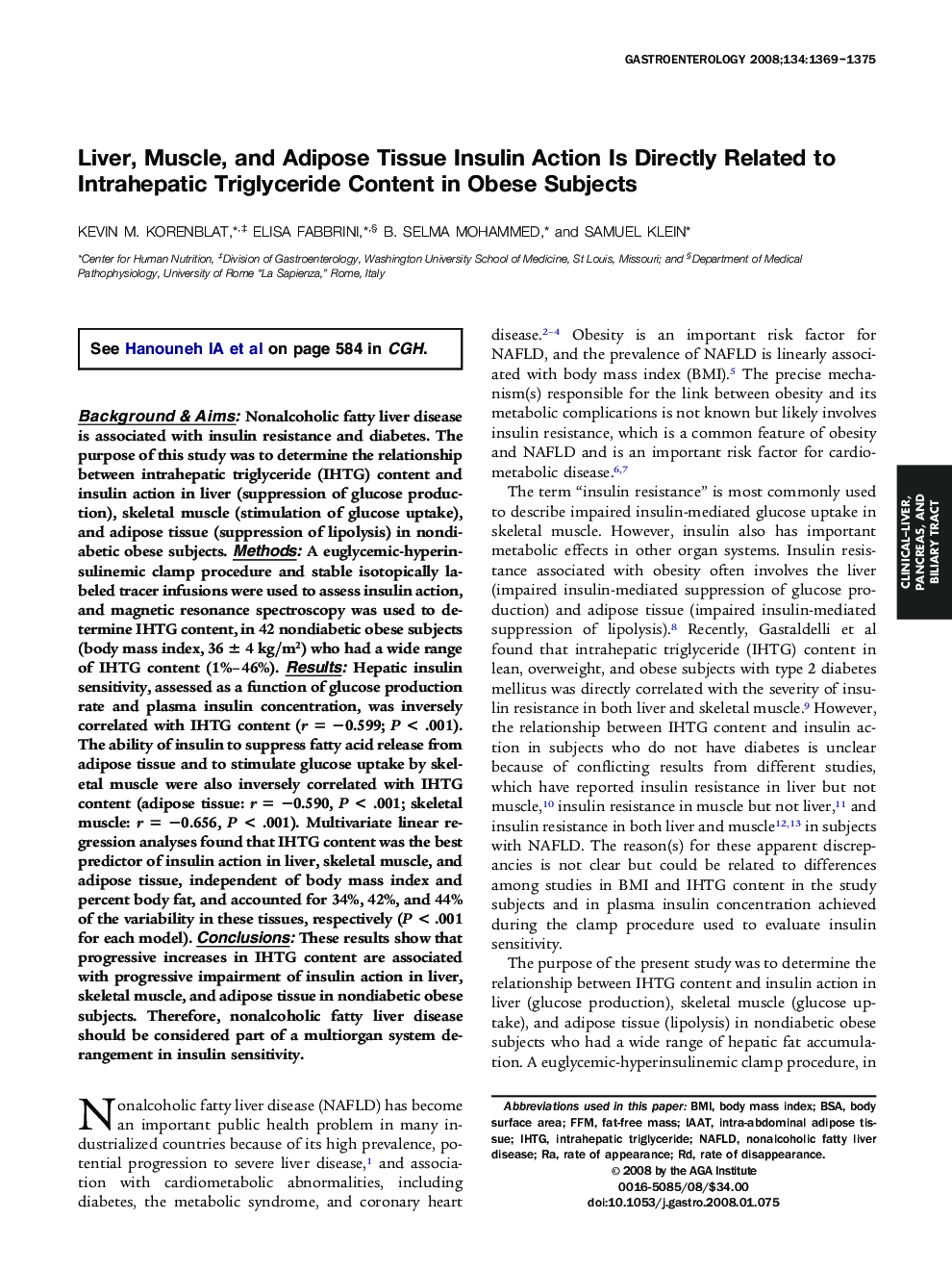| Article ID | Journal | Published Year | Pages | File Type |
|---|---|---|---|---|
| 6096882 | Gastroenterology | 2008 | 7 Pages |
Abstract
Background & Aims: Nonalcoholic fatty liver disease is associated with insulin resistance and diabetes. The purpose of this study was to determine the relationship between intrahepatic triglyceride (IHTG) content and insulin action in liver (suppression of glucose production), skeletal muscle (stimulation of glucose uptake), and adipose tissue (suppression of lipolysis) in nondiabetic obese subjects. Methods: A euglycemic-hyperinsulinemic clamp procedure and stable isotopically labeled tracer infusions were used to assess insulin action, and magnetic resonance spectroscopy was used to determine IHTG content, in 42 nondiabetic obese subjects (body mass index, 36 ± 4 kg/m2) who had a wide range of IHTG content (1%-46%). Results: Hepatic insulin sensitivity, assessed as a function of glucose production rate and plasma insulin concentration, was inversely correlated with IHTG content (r = â0.599; P < .001). The ability of insulin to suppress fatty acid release from adipose tissue and to stimulate glucose uptake by skeletal muscle were also inversely correlated with IHTG content (adipose tissue: r = â0.590, P < .001; skeletal muscle: r = â0.656, P < .001). Multivariate linear regression analyses found that IHTG content was the best predictor of insulin action in liver, skeletal muscle, and adipose tissue, independent of body mass index and percent body fat, and accounted for 34%, 42%, and 44% of the variability in these tissues, respectively (P < .001 for each model). Conclusions: These results show that progressive increases in IHTG content are associated with progressive impairment of insulin action in liver, skeletal muscle, and adipose tissue in nondiabetic obese subjects. Therefore, nonalcoholic fatty liver disease should be considered part of a multiorgan system derangement in insulin sensitivity.
Keywords
Related Topics
Health Sciences
Medicine and Dentistry
Gastroenterology
Authors
Kevin M. Korenblat, Elisa Fabbrini, B. Selma Mohammed, Samuel Klein,
